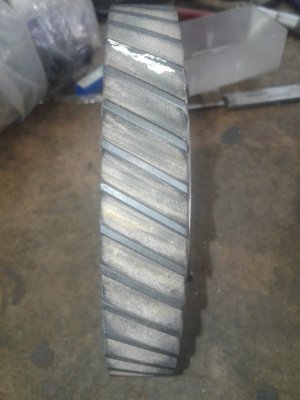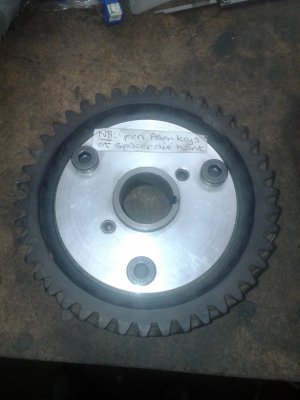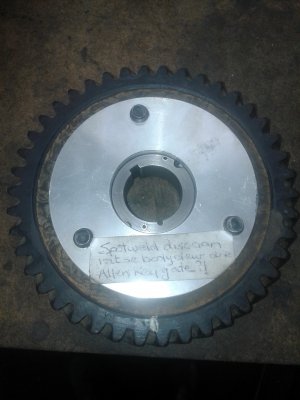Theoretical meanderings by an old man, maybe or maybe not useful. I am officially an "old man", turning 70 this year.
First of all, a Volvo built in Sweden will most likely be metric. Being an automotive part specific to an engine, it might well be any thing. I would be disinclined to think "micarta" since, in electrical parts, micarta is usually a warm brown color. Bakelite is a very old process, one of the earliest incidents of plastic, if not the oldest. It is common as an electrical insulator, is very black, and is very brittle. Those two plastics aside, there are many plastics in use the last 30 odd years that I have no knowledge of.
Theorizing on the engine; if it is a clearance engine, in that the crankshaft can come to top dead center with a valve open, most any material could have been used. If it is a "zero clearance" engine, having the camshaft get out of time with the crankshaft could cause considerable damage.
In either case, using a molded (plastic) gear is a significant reduction to assembly costs and time. It can also possibly be used as a "weak link" to reduce other, more serious damage on failure. In any case, a replacement could be constructed of any material, most easily aluminium. The issues here are "non critical" being primarily increased weight, more affected by corrosive chemicals, and less likely to fail when failure would "save" another part.
The instructions, formulae, system, whatever, for determining metric vs imperial (Modulus V Diametrical Pitch) given above would be most useful. There are many other factors involved in making a gear. First and foremost is what the gear interfaces with. Another gear, timing chain, timing belt, short rope, whatever. If indeed another gear as it appears, perhaps research into that second gear will provide further insight into pitch, pressure angle, et al. Worst case, research and careful measurement would provide enough information to construct something that works. It may not work 100%, but well enough to refine the measurements closer so a second gear could be constructed that was 99.99% useful.
Last but not least, the gear appears to be a "taper" gear. Such is not easily reproduced in a hobby shop environment. It could be theoretically be printed, given enough time and a strong enough medium. My preference would be to find a similar machine in a junked condition to salvage the gear. Possibly having it built by a machine shop but the cost of that would be enormous. Again, this is mostly theoretical meanderings by an old man, maybe or maybe not useful. Just a little "out of the box" thinking to try to assist.
.







